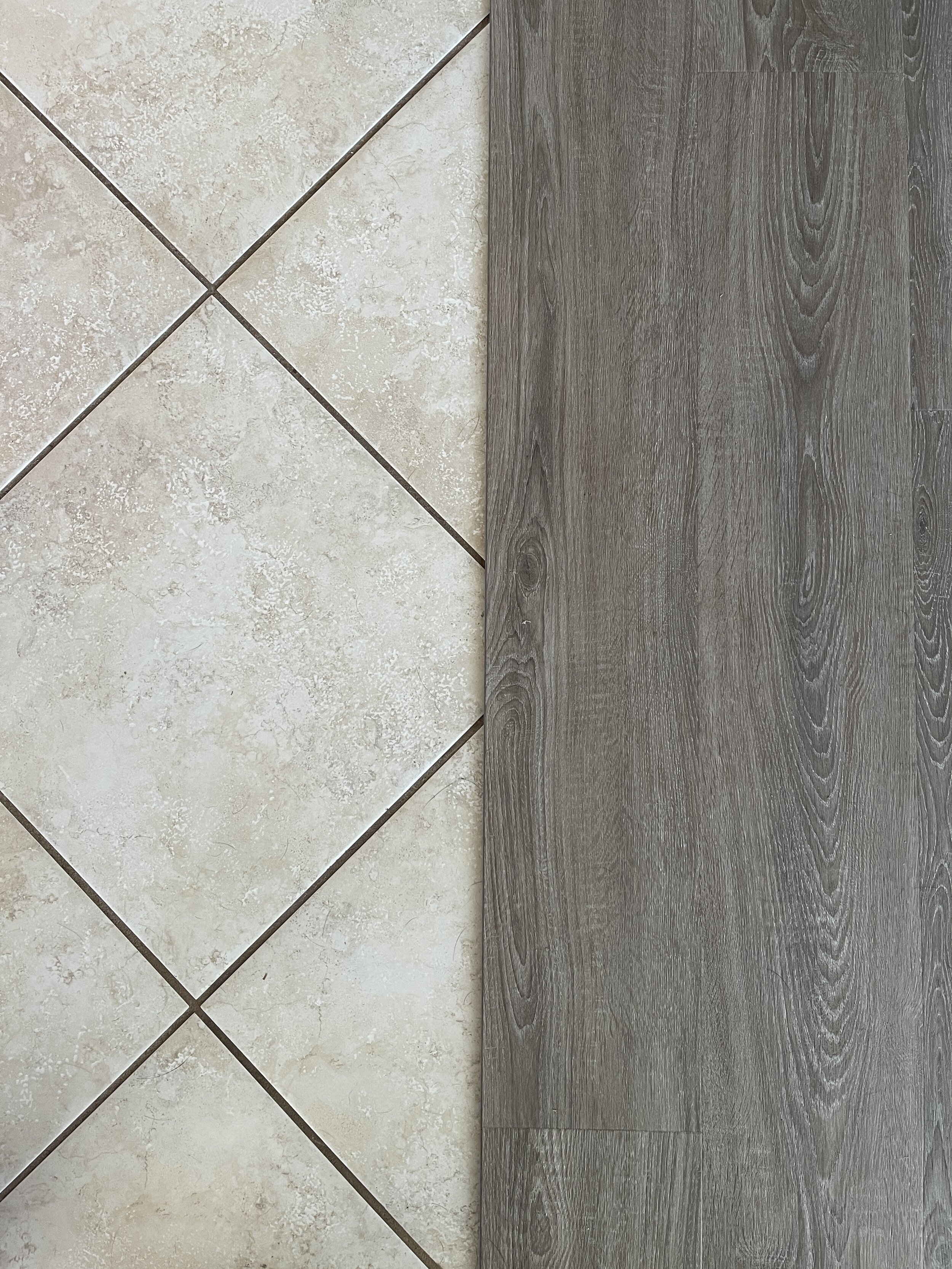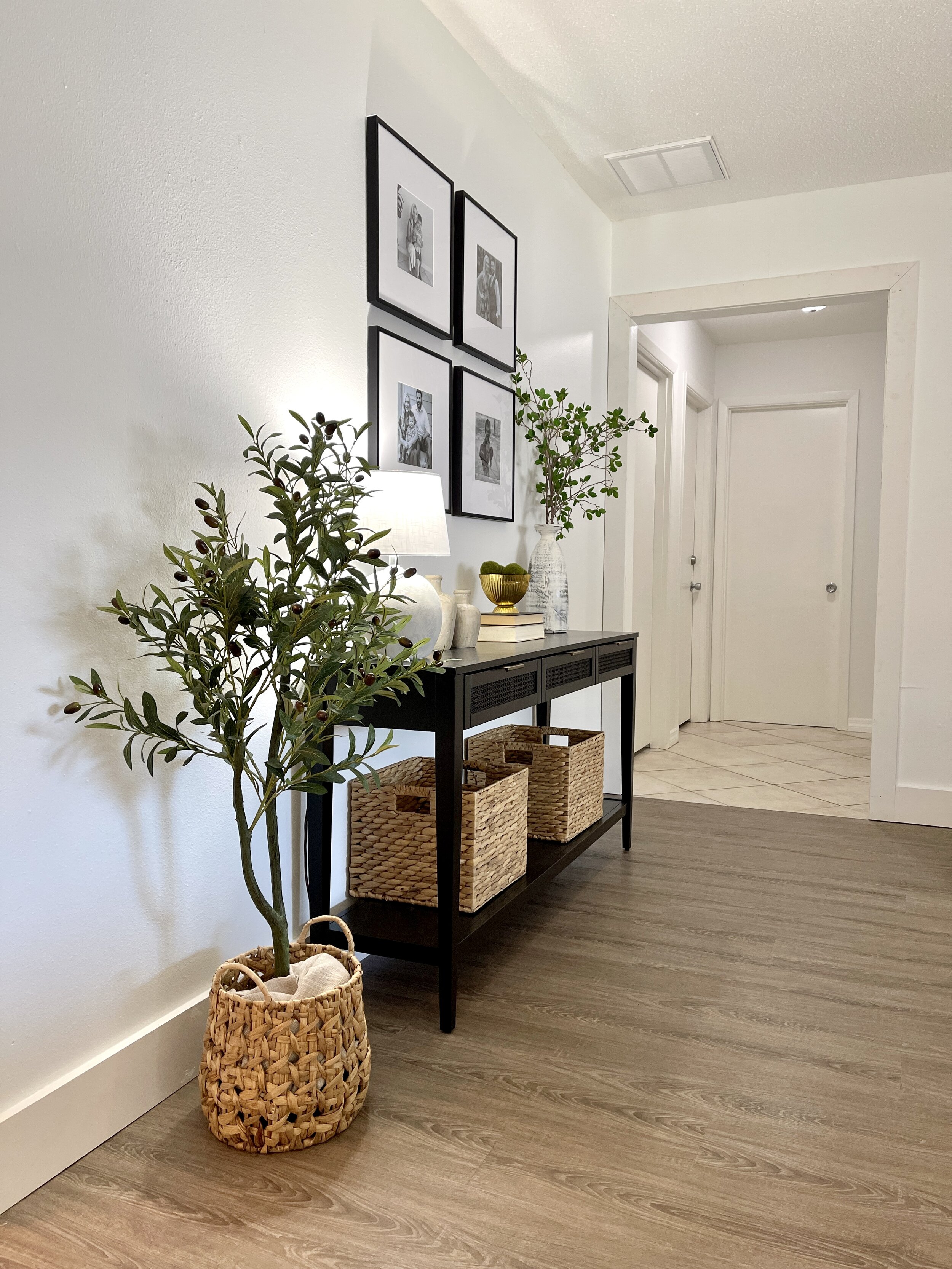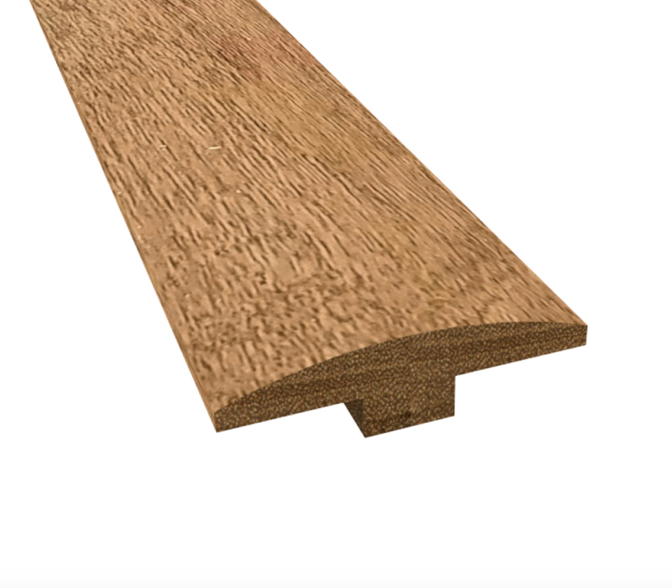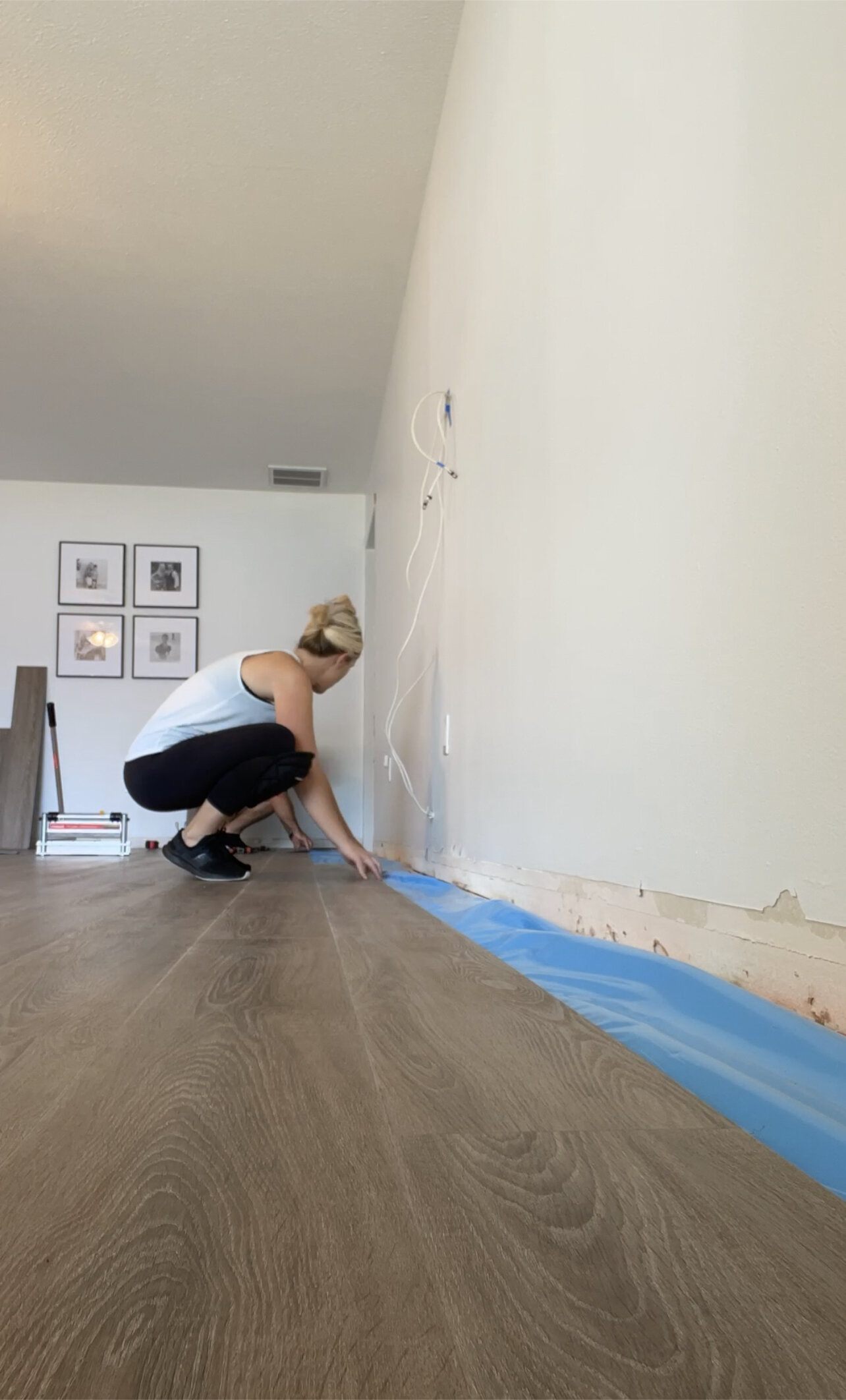Laying Vinyl Planks Over Tile Floors
Here are the details and our experience with laying luxury vinyl plank flooring over top of existing ceramic tile floors.
When I shared the fact that my husband and I planned to lay our new luxury vinyl plank flooring directly on top of our existing ceramic tile floors, I got a lot of questions and skepticism. Both my Instagram and TikTok followers had a million questions and concerns for us. I am happy to say that we had zero issues and are so in love with our new LVP floors. Let me dive in and share our experience with you…
Can you lay vinyl over existing flooring?
First, I am in no way a flooring expert and I am only sharing our personal experience. We did speak at length with the employees at our local flooring store to get their opinion and professional input before we made this decision. Based on their input and the research we did ourselves, you CAN lay LVP floors over existing tile as long as the tiles are secure with no loose pieces, the flooring throughout the room is mostly level, and the grout lines are not significantly deep. In regards to laying LVP over other flooring types, I would go back to the same rules: Is the existing flooring secure to the foundation/subfloor (not loose or floating) and is the flooring level? If you answered yes to both of those, then I think you would be fine to lay LVP over top (but I would still suggest you talk to a local flooring company also).
Is LVP Waterproof?
A lot of people wanted to know if they could lay LVP in their bathrooms and kitchen and if it is waterproof. YES - true vinyl plank flooring is 100% waterproof. You can soak/submerge the planks, pull them up, allow them to dry and relay them. There is absolutely zero damage to vinyl from water. Just make sure you are getting vinyl and not laminate. Laminate flooring is not 100% waterproof (some advertise as being water-resistant but are NOT waterproof).
What vinyl did we use over the tile?
Now let’s talk about the type of vinyl flooring we went with. We chose a rigid vinyl plank that was 7mm thick and had a padding already attached to the backside of it. The brand is CoreLuxe, the color is Beach Cottage Oak and it was purchased from Lumber Liquidators also known as LL Flooring. I think the thickness of the vinyl and the attached padding plays a huge role in both preventing any clicking sounds when walking on it and also preventing any grout lines from showing through the vinyl over time. We did purchase a sample piece of rigid vinyl that was only 5mm thick and there was definitely a big difference in the feel of the 7mm over the tile floors versus the 5mm. Definitely go with the thicker vinyl.
What is a Vapor Barrier/Moisture Barrier?
I got a lot of questions about the ‘blue plastic stuff’ we put down over the tile before laying the vinyl. This was a vapor/moisture barrier and is also called an underlayment. Not all vinyl flooring requires this. It depends on the brand and type of vinyl you are using so either ask the flooring store or refer to the vinyl manufacturer’s website for what is recommended. From our research and what we were told at the flooring store, a vapor barrier prevents any moisture from coming up through the subfloor and damaging the floor; and/or prevents moisture from developing between the subfloor and vinyl. Since we live in Florida and our home has a concrete slab, we have more of a potential to have moisture travel up through the concrete slab and into our flooring which is why it was important for us to use it. This may not apply to you depending on your state and the material of your subfloor. Click HERE for more information on how a vapor barriers works or try a quick Google search to read the specifics.
What if my vinyl ends at carpet or other uneven flooring?
The most asked question I received on both my Instagram and my TikTok was what to do when the vinyl ends at the edge of other tile, carpet, laminate, or more vinyl or wood flooring or what to do if the vinyl flooring butts up to another type of flooring that is taller or lower than the vinyl. Don’t worry! This is an easy fix. They make tons of transition pieces to go between the vinyl/laminate and other types of flooring. It is fine if there will be a lip or if the other flooring is a bit shorter or taller than the vinyl flooring. Below I will share photos of just some of the many different transition pieces that are out there. They make these to match the vinyl and your flooring store can help you determine which kind of transition you will need. These transition pieces act as a little step down or step up to the next room with the different flooring.
A T-Molding for example typically goes between two floorings that are the same level. You can also use these in doorways if you want to end the vinyl and start it again in another direction or at a later date (at a bedroom door threshold for example).
A Reducer is a transition type that you would use to go between the vinyl and another flooring that is not level with the vinyl.
Laying LVP over tile
I won’t go into detail about the process of actually laying the floors. I suggest watching lots of YouTube videos like we did to learn the best ways to lay vinyl flooring. You can also visit my Instagram page and watch all the videos I saved in my ‘Vinyl Floor’ highlight on my profile. We did remove all our baseboards prior to laying the floors. If you do not plan to replace your baseboards, you would want to butt your vinyl up to your existing baseboards and then install a quarter round molding where the floor touches the baseboard once the flooring is complete. Then we made sure the tile floors were swept/vacuumed thoroughly and then we rolled out the vapor barrier. We taped down the edges of the vapor barrier with underlayment tape and started the vinyl from the front right corner of the room and worked our way to the left, row by row.
A CRUCIAL TIP: I want to point out is how important it is to have the right tools when laying vinyl floors. Having the right tools will make the job easier, safer, and less frustrating. I will include a photo below and the links to the tools we used that made the job a lot easier. The vinyl cutter for example was an absolute must! It prevented us from having to get up and walk into the garage to use the saw every time we needed a cut. It was also virtually completely mess-free and easy enough that I was able to cut the boards on my own without my husband’s help.
TOOLS
FAQs for laying LVP over tile
Can we feel the grout lines when we walk on the vinyl? No, we cannot feel the grout lines whatsoever and you would never know there was tile under the LVP. I think this is due to the fact that we used 7mm vinyl and our vinyl had a padding attached to the underside.
Does the LVP make any sounds or clicking noises when you walk? No. Because this flooring had the padding attached to the underneath, there is absolutely no sound at all when walking on it.
Can you lay LVP over carpet (yes, I actually got this question several times)? Absolutely not! You must remove carpet before laying vinyl. It cannot go on top of carpet.
Can you lay LVP over existing hardwood, linoleum, or laminate flooring? Again I am not an expert but here are my thoughts: based off of what we were told by our local flooring store and what we researched online: Yes, you can lay LVP on top of hardwood flooring if the hardwood is secure to the subfloor and level. Yes, you can lay LVP over linoleum that is glued down to the subfloor. No, you cannot lay LVP on top of a floating laminate floor. Most laminate and vinyl plank floors are floating (not glued to the subfloor). If your laminate is glued down, secure, and not moving or shifting, then yes you should be able to lay LVP on top.
Does the vinyl scratch easily or show scratches? The LVP we got has a natural wood feel and is a matte finish. We have two large dogs and a toddler who is constantly dragging toys across it and we have not seen the first scratch at all. I do believe that scratches would show more on a flooring that is smooth with a shiny finish so consider that when choosing the look of your flooring.
Is this beginner friendly? This is a tough question…if you are a relatively handy person and have watched YouTube videos in the past to learn how to do something then I definitely think you can lay your own flooring. I would suggest finding a family member or friend with experience to help you get started. My husband laid laminate flooring in our first home 7 years ago with his dad who taught him how to do it. So he had some experience under his belt before laying this vinyl flooring.
How much is LVP? Vinyl flooring can range in price from $1.99/sqft to $6.99+/sqft. We specifically chose Lumber Liquidators because they had the best pricing for the millimeter thickness of flooring we knew we wanted. The flooring we chose was normally $3.39/sqft but we waited until they had a big sale and the flooring was discounted to $2.57/sqft. We purchased 1,900 sqft, enough to do all the rooms in the house we plan to do.
How much does it cost to pay someone to lay the vinyl for you? We asked this question to the flooring store and they said roughly $2.00/sqft is what we would pay someone in our area (Florida) to lay it for us (in 2021). This just wasn’t in the budget for us.
Did our doors drag on the vinyl? None of the interior doors touched the vinyl and there was plenty of clearance except for our door leading out to the garage. We had to take this door off the hingers, cut a sliver off the bottom of the door using a circular saw and then hang the door back up.
For detailed video of this project, visit me on Instagram and
checkout the Reels on my profile and the ‘Vinyl Floor’ highlight bubble.
















HEY THERE, I’M ASHLEY!
Here to inspire beginner DIYers!